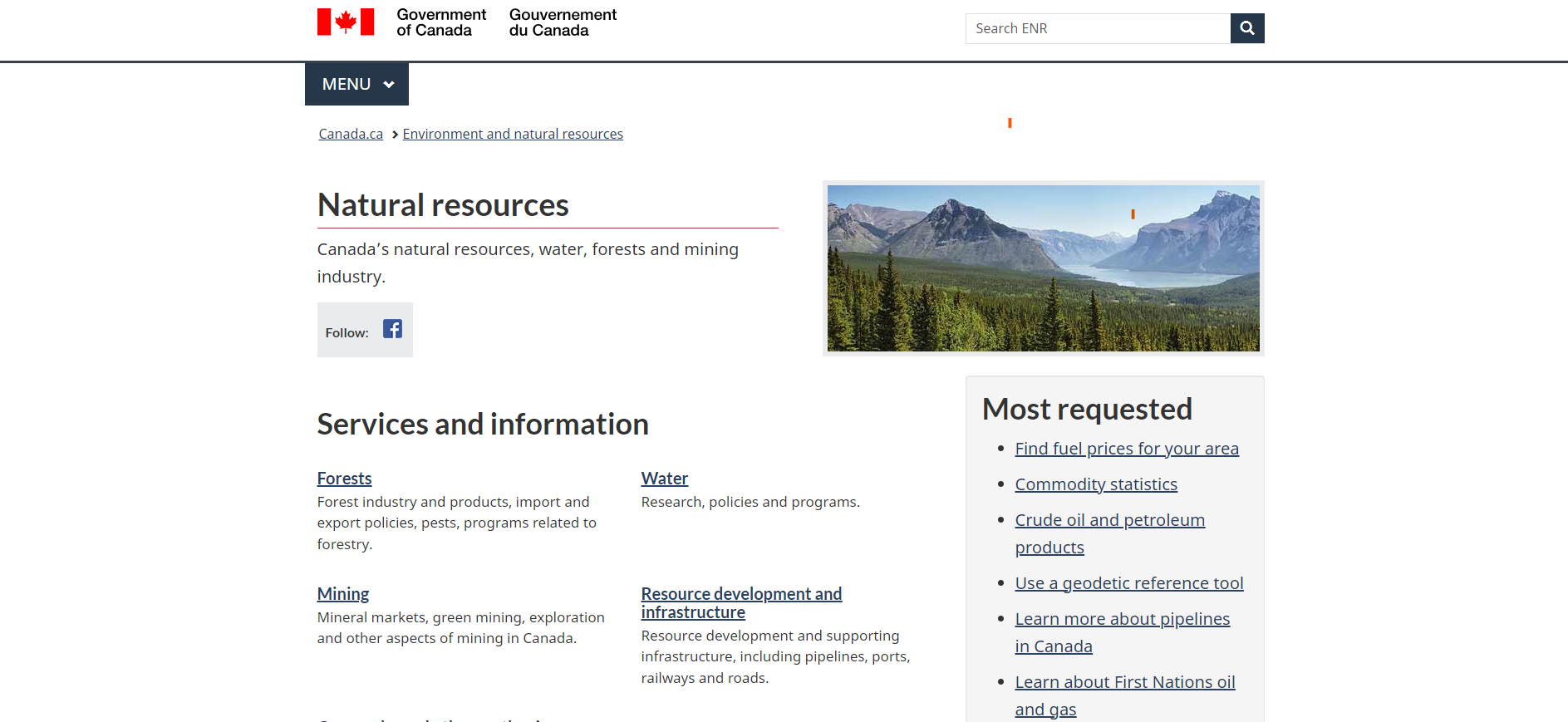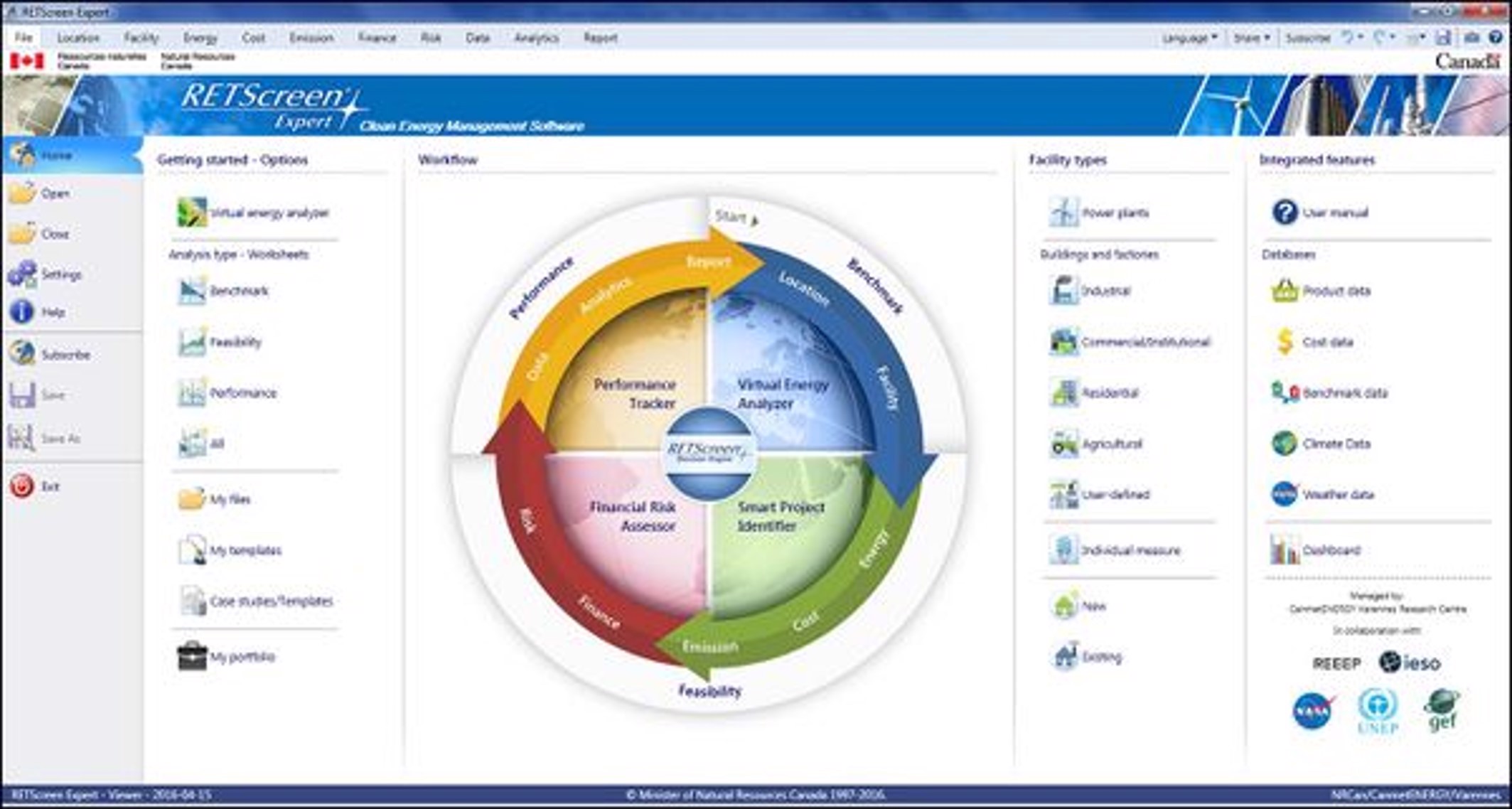RETscreen
Description
RETScreen is a software tool that is widely used in the field of renewable energy and energy efficiency analysis.
The RETScreen Clean Energy Project Analysis Software is a decision support tool that has been developed via collaborative efforts including government, business, and academia. The first development of the technology may be traced back to 1996, when it was undertaken by Natural Resources Canada. The program, which is available at no cost, has global applicability for assessing the energy generation and conservation, expenses, emission reductions, financial feasibility, and associated risks of many Renewable-energy and Energy-efficient Technologies (RETs). The program, which is offered in many languages, encompasses product, project, hydrology, and climate databases. Additionally, it provides a comprehensive user manual and a college/university-level training course centered around a case study. This course incorporates an engineering e-textbook. The model is downloaded by an estimated 1,000 individuals on a weekly basis, resulting in a cumulative total of over 200,000 downloads at this point.

Gallery

Classifications
Scale of implementation
The software harnesses advanced algorithms and data to simplify decision making around energy projects, including renewable energy, energy efficiency, cogeneration and transportation worldwide. RETScreen Expert also allows professionals to measure and verify a facility’s ongoing energy and sustainability performance, and to manage a portfolio of multiple facilities.
Type
The RETScreen® Clean Energy Management is a Software platform that enables low-carbon planning, implementation, monitoring and reporting.
Phase of solution
The utilization of RETScreen Expert extensively focuses on helping facilitate clean energy project deployment by numerous stakeholders and customers, and to help measure and verify the ongoing performance of their incentive and investment portfolios.
Target audience
Service providers, including engineering, architecture & consulting firms, as well as Energy Service Companies (ESCOs), have recognized and have increasingly embraced the software. Government & multi-lateral organizations, as well as regulated electricity & natural gas utilities, also use RETScreen Expert extensively.
Key features-functionality
RETScreen uses a five-step analysis for every model:
- The Energy Model: User enters location of the energy project, the type of system used in the base case, the technology for the proposed case, the loads (where applicable), and the renewable energy resource (for RETs). RETScreen then calculates the annual energy production or energy savings. All thermal generation and renewable technologies can be accounted for using RETScreen. However, the only storage device considered is BES, and it cannot model any hydrogen or transport technologies.
- Cost Analysis: User enters the initial, annual, and periodic costs for the proposed case system as well as credits for any base case costs that are avoided in the proposed case (alternatively, the user can enter the incremental costs directly).
- Greenhouse Gas (GHG) Analysis (optional): Determines the annual reduction in GHG emissions stemming from using the proposed technology in place of the base case technology.
- Financial Summary: User specifies financial parameters related to the avoided cost of energy, production credits, GHG emission reduction credits, incentives, inflation, discount rate, debt, and taxes. From this, RETScreen calculates a variety of financial indicators (e.g. net present value, etc.) to evaluate the viability of the project.
- Sensitivity & Risk Analysis (optional): Identifies how uncertainty in the estimates of various key parameters may affect the financial viability of the project.
References & Sources for Further Reading
